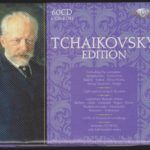 Symphony No.2 Op.17 ‘Little Russian’
Symphony No.2 Op.17 ‘Little Russian’
Tchaikovsky’s Second Symphony was premiered in 1873 by Rubinstein, who also undertook the first performances of the First, Third and Fourth Symphonies, and other important Tchaikovsky compositions from these early years. The symphony is, in part, a nod to popular trends of the day, trends that encouraged the use of indigenous folk music in serious concert works. This tendency is particularly notable in compositions by the Hungarian Franz Liszt, the Norwegian Edvard Grieg and the Bohemian Antonín Dvorák. Tchaikovsky’s countrymen Mussorgsky and Rimsky-Korsakov were also drawn to folk music, and he himself was not immune. Curiously, though, the songs quoted in this symphony are not strictly Russian in origin; they are Ukrainian songs, featured at three moments in the work: the introduction to the first movement, the main theme of the second movement, and the introduction to the final movement. This would not be Tchaikovsky’s only musical visit to Ukraine. The First Piano Concerto, which would be his next major composition, also includes a Ukrainian theme. Because Russians of Tchaikovsky’s time referred to Ukraine as ‘Little Russia’, the Second Symphony has since become known as the ‘Little Russian’ Symphony, a nickname not chosen by the composer himself.
Francesca da Rimini Op.32
Francesca da Rimini, written at the height of the composer’s orchestral mastery in 1876, is the most powerfully dramatic of Tchaikovsky’s symphonic poems. The score is refaced by a quotation from the Fifth Canto of Dante’s Inferno. This describes the punishment of those who succumbed to sensual desires in their earthly lives, and whose fate was to be tormented in Stygian darkness, buffeted by violent, tempestuous winds. never to find peace. Among those so tortured was Francesca da Rimini, who comes forward to tell her story. As with the heroine of his early masterpiece, Romeo and Juliet, and with Tatiana in his opera, Eugene Onegin, Tchaikovsky identified completely with Francesca, and he portrays her with one of his loveliest melodies. But first he sets the scene, and in the introductory Andante lugubre creates an ominously powerful sense of foreboding. Then in the Allegro which follows, with shrieking woodwinds, pungent brass and whirling strings, he achieves a formidable evocation of the tempestuous Inferno. Finally the gales subside and Francesca is introduced alluringly with a limpid clarinet solo. Her melody is restated in different orchestral guises as she tells of her love for Paolo, and later Tchaikovsky introduces another theme, of gentle ecstasy, played by the cor anglais against warmly romantic harp roulades. But the illicit lovers are discovered by Francesca’s husband and there is a great polyphonic climax in the strings, with the bass adding to the emotional turmoil, before the vividly depicted moment of their murder.
Francesca steps back and disappears into the Inferno, and Tchaikovsky’s dramatic reprise of the setting of her eternal punishment leads to a searing final climax, when the sense of an irreversibly tragic destiny is hammered out in violent dischords, with great clashes on the orchestral tam-tam adding to the sense of utter despair.
01. Symphony No. 2 in C minor, ‘Little Russian’, Op.17 – I. Andante sostenuto; allegro vivo
02. Symphony No. 2 in C minor, ‘Little Russian’, Op.17 – II. Andantino marziale; quasi moderato
03. Symphony No. 2 in C minor, ‘Little Russian’, Op.17 – III. Scherzo. Allegro molto vivace
04. Symphony No. 2 in C minor, ‘Little Russian’, Op.17 – IV. Finale. Moderato assai
05. Symphonic Fantasia in E minor after Dante, ‘Francesca da Rimini’
Philharmonia Orchestra
Yuri Simonov – Conductor
FDPBach, esse cd e o texto que o acompanha já estavam na primeira postagem da “Tchaikovsky Edition” que você fez aqui no PQP. Assim, esse post separado foi desnecessário.
Aproveito para agradecer todas as postagens que você tem feito dessa coleção. Muito obrigado!